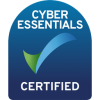Lone Working
Overview
As an employer, you must manage any health and safety risks before people can work alone. This applies to anyone contracted to work for you, including those who are self-employed.
Lone workers are those who work by themselves without close or direct supervision, for example:
- delivery drivers
- health care workers
- engineers including those attending emergency situations
- security staff
- cleaners
- warehouse operatives
- petrol station operatives
- home workers – You have the same health and safety responsibilities for homeworkers and the same liability for accident or injury as for any other workers.
There will always be greater risks for lone workers without direct supervision or anyone to help them if things go wrong. Many of them will also be exposed to work-related road risks.
Manage the risks of working alone:- Under the Management of Health and Safety at Work Regulations, you must manage the risk to lone workers Think about who will be involved and which hazards could harm those working alone.
You must:
- train and educate
- supervise
- monitor lone workers
- keep in touch with them and respond to any incident
When a lone worker will be at someone else’s workplace you must ask that employer about any risks and control measures to make sure they are protected.
Risks to consider
Risks that particularly affect those considered as lone workers may include:
- violence in the workplace
- stress and mental health or wellbeing
- a person’s medical suitability to work alone
- the workplace itself, for example if it’s in a rural or isolated area
In line with your duty to manage risk, under the Management of Health and Safety at Work Regulations 1999, the minimum you must do is (Risk Assessment):
- document your risk assessment as a good practice measure so there is no ambiguity
- identify what could cause injury or illness in the lone workers place of work (hazards)
- decide how likely it is that someone could be harmed and how seriously (the risk)
- take action to eliminate the hazard, or if this isn’t possible, control the risk
- communicate your risk assessment to your lone workers
Author: Paul Jackson, Health & Safety Advisor at Howarths
